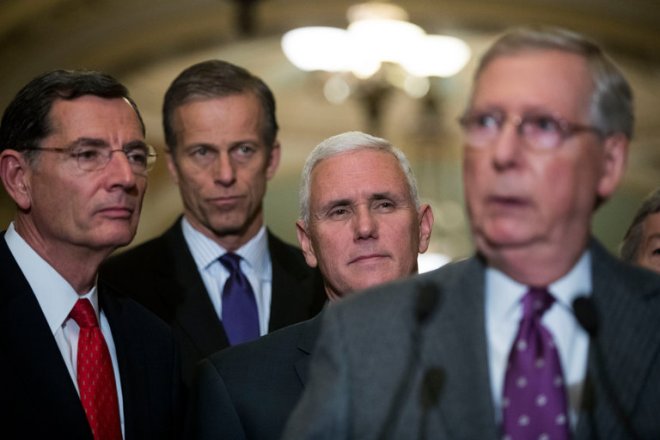The Senate, that body that couldn’t seem to muster enough energy to do very much since 2010 except hold endless hearings about Hillary Clinton, has suddenly gotten busy. Last night – or rather early this morning – they took the first steps toward repealing the Affordable Care Act. The New York Times reporters wrote
The approval of the budget blueprint, coming even before President-elect Donald J. Trump is inaugurated, shows the speed with which Republican leaders are moving to fulfill their promise to repeal President Obama’s signature domestic policy achievement — a goal they believe can now be accomplished after Mr. Trump’s election.
The action by the Senate is essentially procedural, setting the stage for a special kind of legislation called a reconciliation bill. Such a bill can be used to repeal significant parts of the health law and, critically, is immune from being filibustered. Congress appears to be at least weeks away from voting on legislation repealing the law.

Senate Minority Leader Sen. Charles E. Schumer (D-N.Y.) is leading the charge to make Hill Republicans own the Obamacare repeal process.
The Democrats staged a protest on the floor, taking turns speaking even while being ruled out of order. The vote was 51 to 48. So, what can someone who is opposed to repeal do at this point? I found a New York Times Op-Ed Seven Questions About Health Reform to be a useful guide to the questions we should be asking any Senator or Congressperson who supports repeal. The piece by Harold Pollack and Timothy S. Jost should be read in full, but here are what I think are the most important of the seven questions. (The numbering is mine not theirs. And they are not in the order of importance.}
First, “How many millions of Americans will lose coverage?” Among the issues pointed out is
Proposals by Tom Price, Mr. Trump’s choice to run Health and Human Services, and by the House speaker, Paul D. Ryan, would repeal the expansion of Medicaid and replace the A.C.A.’s income-based subsidies with less generous tax credits. Another plan from the House Republican Study Committee would offer deductions. We particularly need to know how this would affect low-income Americans, to whom tax deductions are nearly worthless, and who would generally not be able to afford coverage under these plans.
Second, “Will people over 55 pay higher health premiums for the same coverage?” If the repeal is paired with cuts to Medicare, all of us over 55 will be in trouble. And younger folks who may not have saved much for retirement yet will find it impossible to save enough.
Third, “… how much more will those with costly illnesses or injuries have to pay in out-of-pocket costs?”
Critics of the A.C.A. often argue that the law has made health care unaffordable. But many Americans would pay much more without it. The A.C.A. capped out-of-pocket spending at $7,150 for individuals and $14,300 for families for 2017. Republican proposals appear to offer no protection from high deductibles and other cost-sharing.
This could be devastating to millions, including older Americans who often develop chronic illnesses.
Fourth on my list. “Will the new plan let insurers charge women higher premiums than men while offering them less coverage?”
Before the A.C.A. banned gender-based premiums, insurers in many states charged women more than men of the same age — some as much as 50 percent more. The A.C.A. also required all insurers to cover preventive health services without co-payments; for women, this includes birth control, Pap smears, mammograms and a host of other crucial services. Maternity care is fully covered as well. Republican replacement plans offer no such protection. And many Republicans want to defund Planned Parenthood, too, which would deprive women not just of coverage but also of care.
And, as we have learned, many men, particularly Republican men, have no idea of how a woman’s anatomy works. For those opposed to choice on abortion, this could have the effect of increasing the number of abortions – legal and illegal.
I think there is time while President Trump argues with Congress and Congress argues with itself about what should be in any new law. If your Senator and/or Congressperson favors repeal, call or write or visit and ask some of the seven questions. And express your support for those that oppose wholesale repeal. Should you agree with what is happening, leave me a message explaining why you think this is OK.
Photograph: Alex Wong/Getty Images




